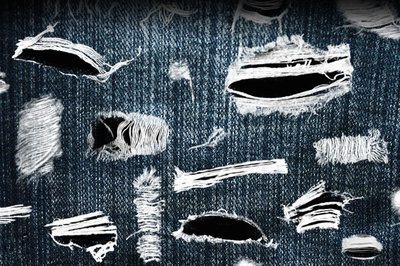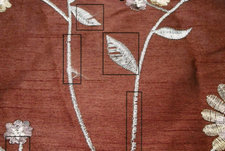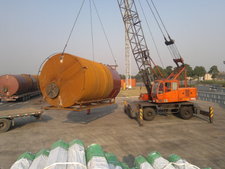3 Types of Quality Defects in Different Products
Why is it so important to define and classify quality defects in a product?
Imagine, for example, you’re manufacturing women’s blouses in a factory in Indonesia. After receiving an inspection report from your QC company, you find that about one out of every three blouses has untrimmed threads.
Would you classify this quality defect as “minor” or “major”? You might say that untrimmed threads constitute a “minor” defect that should be addressed if appearing in a certain number of pieces in an order. On the other hand, if you distribute your garments at a high-end retailer, you may have a lower tolerance for this and other quality defects.
Defining the different types of quality defects for your product is an important step in determining if the goods should pass or fail inspection. It’s a combination of both the quantity AND severity of different types of defects that determines whether your order will ship or that the factory might need to do some rework or repairs.
A professional inspection company often has established standards for classifying various defects for a particular product type. But the responsibility ultimately falls on you, the buyer, to determine which quality defects are more severe than others. Luckily, we’re here to tell you what each defect type means and the things to consider when determining their importance.
The 3 Types of Quality Defects
Defects are classified into three main categories — minor, major and critical. Based on the AQL level applied, there will be an allowable number of defects for each category, within a given sample size.
- Minor defects are small, typically insignificant issues that do not affect function or form of the item. If evident, it likely would not cause the customer to return the item to the store. Your order can fail inspection, however, if the number of minor defects found exceeds the limit set by the acceptable quality level.
- Major defects are considered those which could adversely affect performance of the product. Such a defect would likely cause a customer to return the product.
- Critical defects are those which would render the item unusable, or could cause harm to the user or someone in the vicinity of the product. An item will often fail product inspection if a single critical defect is found within the order. According to estimates from the U.S. Consumer Product Safety Commission (CPSC), there were about 256,700 toy-related injuries treated by emergency personnel in 2013, many resulting in product recalls.
Examples of Quality Defects in Products
Below are some common examples of minor, major and critical defects for different item types:
SoftlinesSoftlines include raw fabric, consumer fabric, garments and shoes.
- Minor: Untrimmed thread — these are particularly common in garment manufacturing, especially given the amount of manual labor involved. They are typically easily reworked by the factory.
- Major: Missing stitches — these can be more of an issue if the factory is rushing to meet a deadline in completing and shipping an order. Missing stitches are usually relatively easy for a factory to rework.
- Critical: Needle found in item — garments, fabric and shoes are usually placed on a conveyer belt and then run through a machine which detects metal objects. If a needle or similar item is not found during this process and ends up in the finished goods, it could pose a hazard to the end user. Thus, a finding like this is usually marked as a critical defect that results in the item failing inspection.
Hardlines
Hardlines include metal items, such as sporting equipment and tools.
- Minor: Light abrasion on surface — an abrasion on the surface of a hardline item could be related to one or more processes used in production or simply rough handling. Abrasions and other damage to the surface of an item may be difficult for a factory to rework but typically does not render the product unsellable.
- Major: Deep scratch on logo of item — damage to the logo printed or engraved in an item is often considered a major defect. Like light abrasions on the surface, these can be difficult to repair but are generally not tolerated in a large number of units per order.
- Critical: Sharp point or burr on item — as with softline goods, if you find sharp points or other areas that could cause harm to the end user, this is often cause for a failing inspection. Hazards found with products often lead to product recalls, which is part of the reason why they are taken so seriously.
Consumer electronics include products like mobile phones, tablet PCs, Bluetooth devices, USB drives and cameras.
- Minor: Removable mark on item — product inspection can reveal marks on an item’s surface, such as dirt or excess glue. These are often considered minor if they’re easily wiped away or otherwise removed.
- Major: Non-function or malfunction — if an electronic product fails to switch ON or exhibits other malfunctions, this is often considered a major quality defect. Depending on the complexity of the product, rework of software or hardware may be needed to correct the issue.
- Critical: Failure of key electrical safety test — tests like the hi-pot test are vital for assessing product safety for electronics. If an electronic item fails a safety test, there could be risk of fire or other dangerous complications resulting from normal use of the item.
“Industrial components” is a broad term. But some examples include fabricated steel, conduit piping and gas valves.
- Minor: Surface imperfection — a surface inspection like a welding protrusion on a steel pipe, for example, typically won’t affect the use or functionality of an industrial product. It’s important to consider both the type of imperfection and the intended use of the product before deciding if this kind of quality defect is minor.
- Major: Dimensions out of tolerance — a deviation from stated dimensions might be considered a major defect, even if these dimensions are not critical to the function of the industrial product. Differences in dimensions like these might affect packaging or shipping of the finished goods.
- Critical: Rust — depending on the applications of the product, rust can be considered a critical defect, as corrosion before shipping can be a sign of accelerated degradation. Rust should be a serious concern for you if you’re importing gas or water pipes, for example.
Conclusion
These are rough guidelines that we and other third-party inspection companies follow, in order to categorize defects. However, ultimately, quality defects and their severity should be determined by you, the buyer.
So if you find that your own third-party inspector has classified a defect in a certain category, but you feel otherwise, then let them know. This feedback is valuable because it allows for an adjustment to the reporting on future inspections. Likewise, if the inspector finds “defects” that you do not consider to be defects at all, be sure to inform them so they can make necessary changes (see 3 Factors for Accepting a Failing Result).
More information and feedback on reporting will continually allow you to have the most accurate inspections, especially if recurring inspections are needed on the same items.
About Oliver Knack
Client Services Manager, InTouch Manufacturing Services
Oliver Knack has been with InTouch since August 2013 and is Manager of Client Services. He comes from Brisbane, Australia and has lived and worked all over China, including in Qingdao, Taipei and Shenzhen. He is an avid car enthusiast.














